Okinawa World & Gyokusendo Cavern おきなわワールド・玉泉洞
|
Title   • File Name • File Name   • Date • Date   • Position • Position   |
|
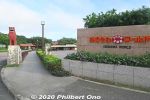
Okinawa World is a fairly large theme park centering on a large underground cavern called Gyokusendo. Above ground, there are attractions featuring Okinawan culture including traditional architecture, traditional crafts, habu snake show, and Eisa drum show. Major tourist attraction in the southern part of Okinawa island.
|
|

To get to Okinawa World, I took a bus from Naha Bus Terminal. There are many buses and bus stops, so ask the bus information booth inside the bus terminal. Say where you want to go, and she will tell you which bus to take and where to get off.
|
|

For Okinawa World, take the No. 83 bus. The bus leaves only once or twice an hour and takes about 45 min.
|
|
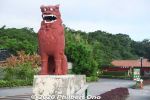
Seesaa at the entrance of Okinawa World.
|
|
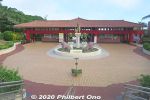
Okinawa World front gate.
|
|
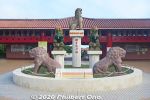
Okinawa World's front gate is decorated by five seesaa/shisa to ward off evil and bring in good fortune.
|
|
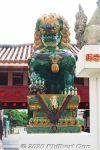
Chinese-style tri-color shisa with glazed finish. Made in China and originally decorated the Chinese Pavilion at the Tsukuba Expo '85 in Ibaraki Prefecture.
|
|
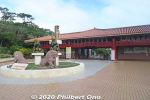
Okinawa World charges ¥2,000 admission. Open 9 am to 5 pm. Note that the park might be closed if there is a surge of Covid cases on Okinawa.
|
|
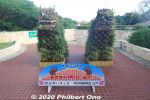
Pair of shisa after entering the Okinawa World gate.
|
|
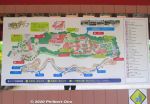
Map of Okinawa World. Many attractions above the cavern. When you buy your ticket, find out when the next habu snake show will be. See it first if it will start soon. See the habu show or cavern first which are near the front gate. Also find out the Eisa drum show time. Largest building is the shopping mall and restaurant complex which you can see last.
|
|
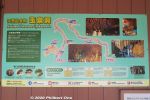
Map of Gyokusendo Cavern. Many natural features have names. After getting out of the cavern, you can go across the park toward the main gate and see the Kingdom Village.
|
|
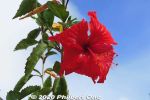
Red hibiscus at Okinawa World.
|
|
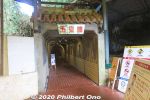
Entrance to Gyokusendo Cavern or Cave. 玉泉洞
|
|
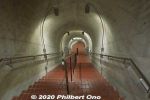
Steps down to Gyokusendo Cavern.
|
|
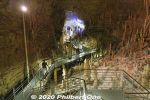
The main attraction of Okinawa World is Gyokusendo (玉泉洞), one of the largest limestone caverns in Japan. It's cooler in here (21˚C), so it's great in summer.This section is called Toyo Ichido. 東洋一洞
|
|
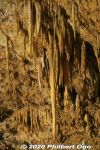
The part of the cavern open to the public is 890 meters long. Takes about 30 min. to walk through it. Diverse features and stalactites everywhere with colored lighting.
|
|
|
|
|
|
|
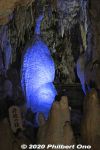
Lots of blue lighting.
|
|
|
|
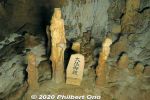
"Buddha statues"
|
|
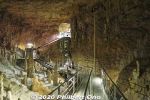
The cavern basically follows an underground stream. Tourists can walk on this walkway. It's always wet and water dripping.
|
|
|
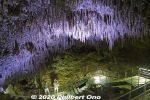
"Ceiling of Spears" 槍天井
|
|
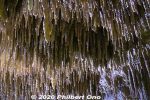
"Ceiling of Spears" 槍天井
|
|
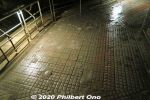
Ice on the walkway.
|
|
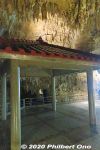
Rest house in a cavern.
|
|
|
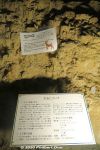
Deer bone fossils.
|
|
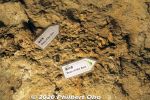
Deer bone fossils.
|
|

Where the stalactites are too long, they had to be cut to make way for tourists.
|
|
|
|
|
|
|
|
|
|
|
|
|
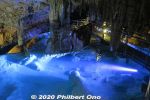
Inside Okinawa World's Gyokusendo Cavern, this is called the Blue Spring. Perhaps the prettiest spot of all. 青の泉
|
|
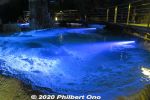
Blue Spring is also a limestone dam.
|
|
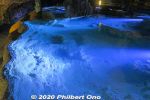
Not sure if this is the natural color or the color of the lights.
|
|
|
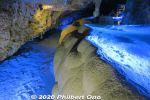
Blue Spring limestone dam.
|
|
|
|
|
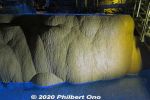
Golden rock
|
|
|
|
|
|
|
|
|
|
|
|
|
|
|
|
|
|
|
|
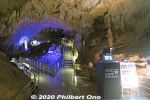
Take a selfie here.
|
|
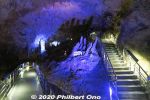
Platform for a higher shot/view.
|
|
|
|
|
|
|
|
|
|
|
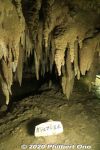
Banyan tree formation
|
|
|

Japanese mitten crab, one of the creatures that live in the cavern. モクズガニ
|
|

Freshwater goby, one of the creatures that live in the cavern. ヨシノボリ
|
|
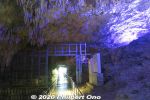
Nearing the cavern exit.
|
|
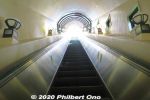
At the end of the Gyokusendo Cavern is a long escalator going back up to ground level for the exit.
|
|

Habu Museum Park is another major attraction of Okinawa World. Habu is a venomous pit viper endemic to the Okinawan and Amami islands. There are a number of species.
|
|
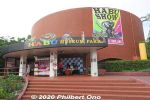
Habu Museum Park has an educational museum about the habu, a zoo of habu and other snakes, and a small hall for the habu snake show. First find out what time the next habu show will be.
|
|
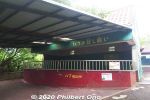
Habu zoo.
|
|
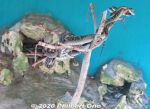
The Habu Museum has live habu on display. Nocturnal, so they were sleeping. Habu are venomous vipers in Okinawa.
|
|
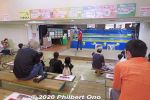
Also popular in Okinawa World is the Habu Museum Park and Habu Show. Habu is Okinawa's venomous snake. Habu Theater for the 20-min. habu show a few times/day.
|
|

Okinawa World's Habu show was interesting, but not particularly thrilling. The viper is not like a trained monkey doing tricks for a treat each time. The snake doesn't understand such a concept.
|
|

The trainer explained about the habu while handling it with a hooked pole.
|
|
|
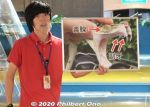
The habu's rear pair of fangs excrete the venom.
|
|

Habu's nostril, eyes, and pit.
|
|
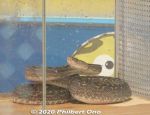
Habu ready to attack. If you see this pose, run away quick.
|
|
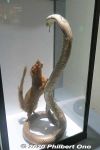
The trainer mentioned that in the past, they had a mongoose and habu snake fight each other in the show. But due to animal rights concerns, it was discontinued. These are only stuffed animals on display in the Habu Museum.The mongoose was introduced to Okinawa in 1910 to control the habu population. But the mongoose instead preyed on other native species.
|
|
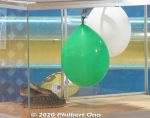
Two balloons to irritate the habu.
|
|
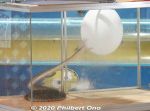
The habu didn't care for the white balloon, but went for the green one in a split second. Very dramatic...
|
|
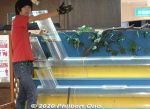
The stage also had two partially filled water tubes for the show's climax (?). This is the Snake and Mongoose Show. Instead of fighting each other, they race in the water.
|
|

In the tubes, it was a swimming race between a mongoose (upper tube) and habu (lower tube). They were both released into their tubes at the same time.
|
|

It was to see which would reach the other end of the tube first. The tubes were about 5 meters long.
|
|
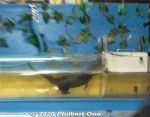
The mongoose immediately and hilariously swam through the tube, winning the race hands down.
|
|
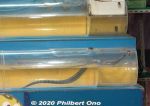
The snake didn't understand it was a race and wandered back and forth in the tube until it finally reached the other end after correctly thinking that it was the way out. So that was the main highlight of the show...
|
|
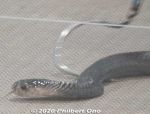
Also showed a cobra and tried to provoke it to show its expanded neck.
|
|
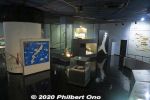
Habu Museum has many interesting exhibits about the habu. There's also some English.
|
|

Striking reach of the habu is much wider compared to a cobra. It's 360˚ all around. Watch out for it.
|
|
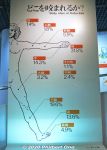
Where habu bites occur. Most common (31.8%) on the fingers, then the calf of your leg. Ouch!
|
|
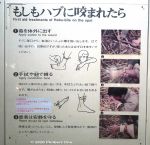
First-aid for a habu bite. Suck out the venom and spit it out.
|
|
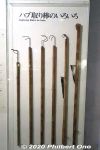
Hooked poles for catching habu. Habu are caught for making Habu-shu liquor.
|
|
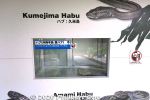
Exhibits of different species of habu. This one is from Kumejima island.
|
|

Habu viper from Kumejima.
|
|
|
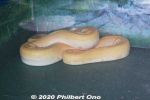
Boa constrictor.
|
|
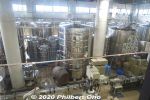
Inside Nanto Brewery producing habu-shu liquor. 南都酒造所
|
|
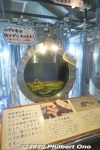
Brewing Habu liquor or habu-shu (ハブ酒) made with awamori or brandy.
|
|
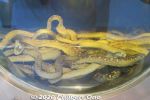
The extract from the snake supposed to be good for you. The snake's venom is somehow neutralized by the alcohol, so it's not poisonous when you drink it.So what do they do with the snake after drinking the habu-shu? Would a bird of prey eat an alcohol-soaked snake?
|
|
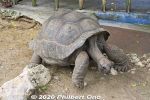
Old tortoise.
|
|
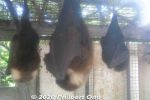
Bats sleeping.
|
|
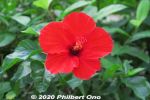
Red hibiscus.
|
|
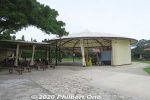
Eisa Plaza is where they perform the eisa drum show. エイサー広場
|
|
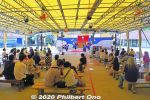
Super Eisa Show is performed three times a day for 30 min. スーパーエイサーショー
|
|
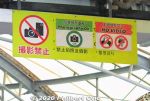
Confusing signage, but still photos are okay, but video prohibited.
|
|
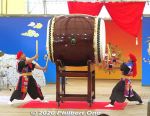
Large taiko drum.
|
|
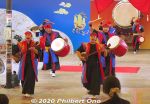
Okinawan Eisa drummers.
|
|
|
|
|
|
|
|
|
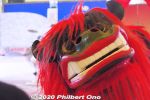
Okinawan shishi-mai lion dance.
|
|

Okinawan shishi-mai lion dance.
|
|
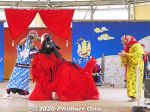
Okinawan shishi-mai lion drinking awamori.
|
|
|
|
|
|
|
|
|
|
|
|
|
|
|
|

Great show! Saw it twice.
|
|
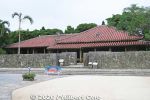
Okinawa World also has an architectural park called "Kingdom Village" with a few traditional Okinawan homes which were moved here. This is the grandest home, called the Uezu Residence 上州家
|
|

Uezu Residence is the grandest home in the park. Many of the homes are National Tangible Cultural Properties.上州家
|
|

Stone walls in front of Uezu residence.
|
|
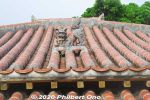
Shisa on the roof.
|
|
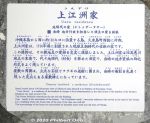
About Uezu Residence. 上州家
|
|
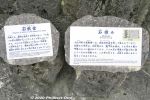
About the stone walls.
|
|
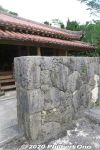
Stone wall for privacy in front of Uezu residence.
|
|
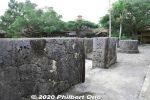
Rear view of stone walls.
|
|

Inside Uezu Residence. Sanshin also displayed.
|
|

Inside Uezu Residence.
|
|
|
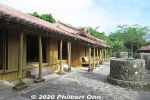
Uezu Residence
|
|
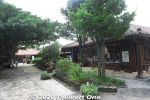
Okinawa World's Kingdom Village also has other traditional Okinawan homes converted into gift shops and craft workshops.
|
|
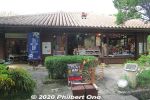
Weaving workshop.
|
|
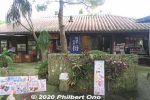
Paper craft workshop. 紙漉き
|
|
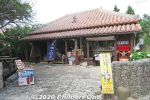
Leather crafts.
|
|
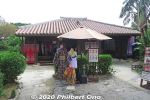
At Okinawa World, studio to try on Okinawan bingata kimono and pose for photos.
|
|
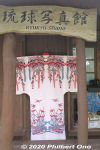
Okinawan bingata kimono
|
|
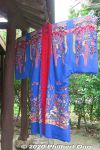
Okinawan bingata kimono
|
|

Pricing for renting Okinawan bingata kimono.
|
|
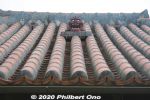
Shisa (シーサー) guardian lion dog statue on the roof to ward off evil spirits.
|
|
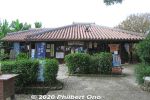
Indigo dyeing workshop.
|
|
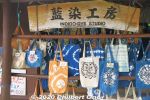
Indigo fabric goods.
|
|
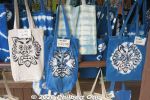
Indigo fabric goods.
|
|
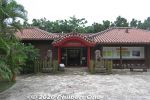
Okinawa Culture Center is a small history museum in Okinawa World. 王国歴史博物館
|
|
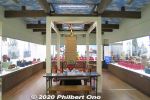
Inside Okinawa Culture Center. Two rooms with glass cases of artifacts.
|
|
|

Shisa made of ivory.
|
|

Lots of different shisa displayed in the museum.
|
|
|

About shisa in Okinawa.
|
|
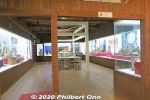
Another room of exhibits.
|
|
|
|
|
|
|
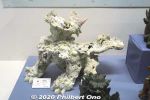
In Okinawa Culture Museum, Shisa made of coral.
|
|
|
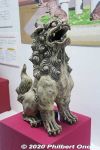
Scale model of one shisa in front of Okinawa World's main gate.
|
|
|

Okinawan children's toys.
|
|

Okinawan children's toys.
|
|

Okinawan children at work.
|
|
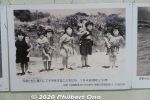
Okinawan children babysitting in the old days. It was a common sight on mainland Japan too.
|
|
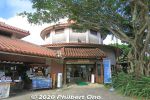
Sugar Cane Hall is mainly an exhibition space. No sugar cane. It's also the entrance/exit for the Kingdom Village. サトウキビ館
|
|
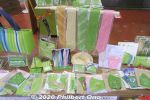
Masks, handkerchiefs, neckties dyed green with sugar cane leaves. Very nice green color.
|
|
|
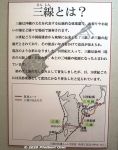
About the Sanshin, Okinawa's shamisen string instrument famous for snakeskin (not habu).
|
|
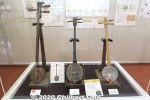
Sugar Cane Hall also has a Sanshin exhibit.
|
|

Different sanshin
|
|
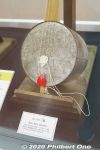
Tin can sanshin.
|
|
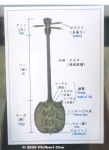
Parts of the sanshin.
|
|
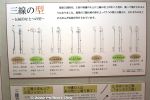
Different shapes of the sanshin.
|
|
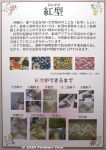
How bingata kimono is made.
|
|
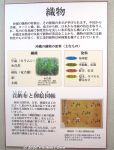
Weaving Okinawan fabrics.
|
|

Diverse fabric dyeing in Okinawa.
|
|
|
|
|
|
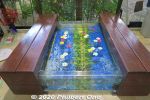
Little fish clean off your skin on your feet.
|
|
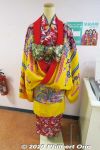
Bingata Okinawan kimono.
|
|
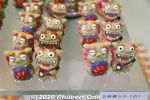
Small shisa for sale.
|
|
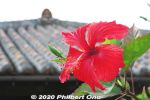
Red hibiscus
|
|
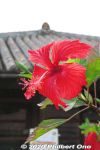
Red hibiscus in Okinawa World.
|
|
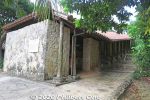
Kingdom Village also has a noborigama sloping kiln for pottery. 登り窯
|
|
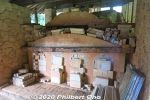
Botom end of the noborigama sloping kiln where the fire starts and the heat climbs up the kiln.
|
|
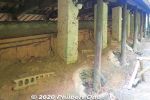
Side of the noborigama sloping kiln
|
|

About the noborigama sloping kiln.
|
|
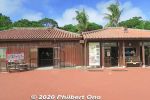
Pottery workshop in Okinawa World. 陶器工房
|
|

Pottery workshop in Okinawa World.
|
|
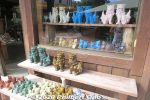
Pottery workshop in Okinawa World.
|
|
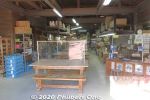
Pottery workshop in Okinawa World.
|
|
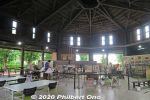
Ryukyu Glass Kingdom Studio is where you can make your own glassware. 琉球ガラス王国工房
|
|
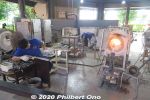
Ryukyu Glass Kingdom Studio
|
|
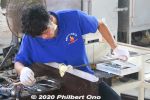
Ryukyu Glass Kingdom Studio
|
|
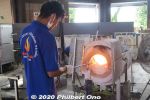
Ryukyu Glass Kingdom Studio
|
|
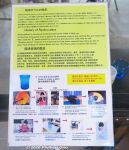
How to make glassware at Ryukyu Glass Kingdom Studio.
|
|

Glassware you can make at Ryukyu Glass Kingdom Studio.
|
|
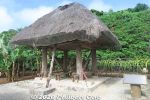
Tropical Orchard is what you see after exiting the Gyokusendo Cavern. 熱帯フルーツ園
|
|
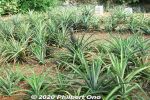
Tropical Orchard has pineapple. 熱帯フルーツ園
|
|
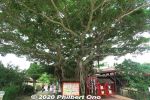
Chinese banyan or gajumaru tree (ガジュマル) at Okinawa World.
|
|
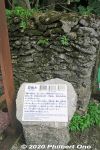
Stone wall
|
|
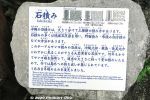
Stone wall
|
|
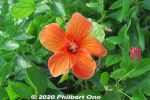
Orange hibiscus
|
|
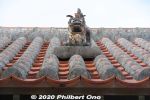
Shisa (シーサー) guardian lion dog statue on the roof to ward off evil spirits at Okinawa World.
|
|
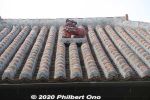
Shisa (シーサー) guardian lion dog statue on the roof.
|
|
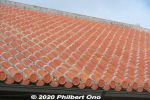
Okinawan red roof tiles
|
|
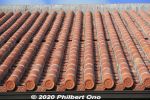
Okinawan red roof tiles
|
|
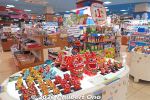
Okinawa World's gift shop.
|
|
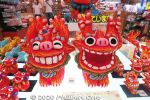
Happy shisa gifts
|
|
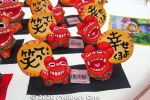
Laughing shisa in the gift shop.
|
|
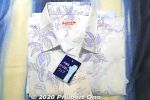
In the gift shop, bought this kariyushi shirt. Kariyushi is an Okinawan-style Aloha shirt. Most designs are muted in color, similar to showing the reverse side of the material. This design shows the deigo, Okinawa's official flower or tiger's claw (デイゴ). I made sure that it was made in Okinawa. Cheaper shirts are made elsewhere. かりゆしウェア
|
|
|
|
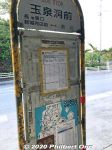
Gyokusendo-mae bus stop back to Naha. Buses are infrequent. Typical bus stop sign on Okinawa. Simple, metal panel with a grunge look. Must be like this to withstand frequent typhoons.
|
|

Bus came on time. No. 83 back to Naha.
|
|
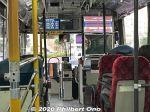
Buses in Naha look almost the same on the inside as buses in Tokyo. However, in Naha you board and exit through the front door. The back door doesn't work. In most cases, you pay the fare when you get off.
|
|
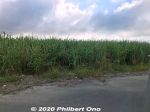
Some sugar cane in Nanjo, Okinawa.
|
|
|
|
|
|
|